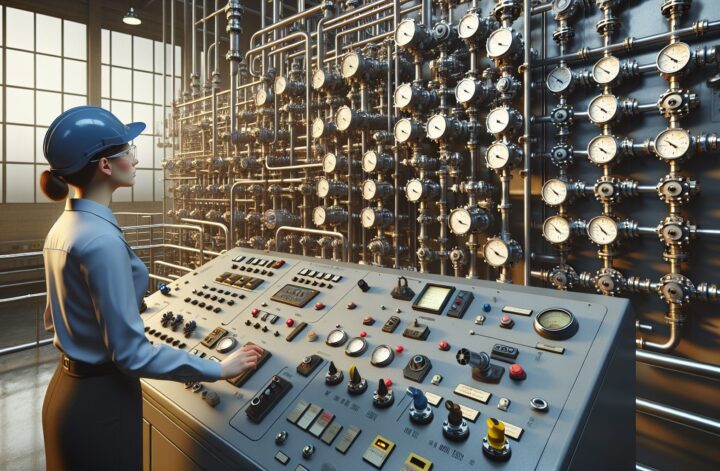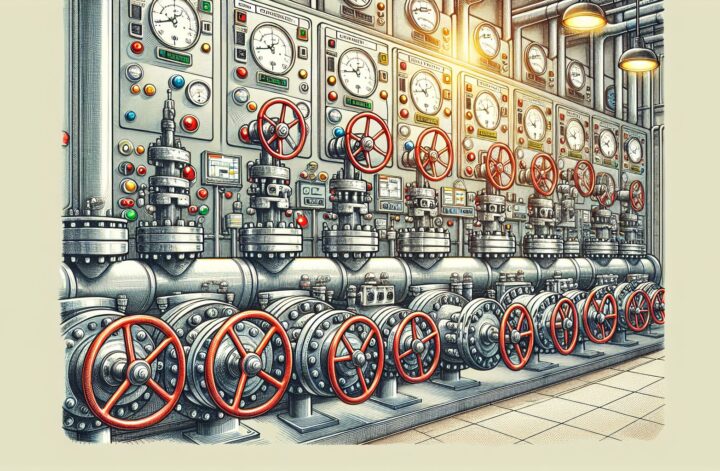The ongoing technological revolution across various industries has transformed mundane processes into sophisticated tasks. Valve control is no exception – its evolution from manual to automated systems has created an avenue for efficiency, safety, and operational effectiveness. The broad spectrum of valve control comprises numerous facets, and this article focuses on one crucial aspect – “Valve Control Integration.”
What is Valve Control Integration?
In layman’s terms, valve control integration involves linking the control valve system with other internal and external systems, enabling seamless operation. It forms the groundwork for interoperability, allowing all systems to communicate effectively. Thus, it provides more comprehensive control over the regulation of flow, pressure, and level in a system, typically within an industrial setting.
Valve control integration, when executed successfully, can offer a plethora of benefits. These include improved efficiency, reduced downtime, increased service life, and more. It has become an integral part of industries that heavily relies on valves for fluid control, such as water treatment plants, power generation industries, and oil and gas refineries, among others.
The Mechanism of Valve Control Integration
Before delving into the benefits of valve control integration, it’s essential to understand its fundamental working principle. At the helm of it all is the automated control valve, designed to regulate flow or pressure without manual intervention. These valves are equipped with various sensors, actuators, and controllers, working in tandem to chart the system’s operation.
Integration starts with the system’s control unit communicating with the valve controllers, signaling them to adjust the valve mechanism for the desired output. This communication typically occurs via a designated protocol that can vary based on the industry utilizing the system and the necessities of the organization.
Moreover, the data from valve actuators and sensors provide real-time feedback to the control unit, aiding in maintaining optimum operational conditions and enabling instantaneous adjustments.
Benefits of Valve Control Integration
Integrating control valves within an industrial setting isn’t merely plug-and-play. It requires careful planning and execution for the perfect interplay between the various systems. Despite the complexities, several advantages make it a worthy pursuit.
-
Increased Efficiency: The Microsoft report shows a 22% increase in efficiency when opting for integrated systems instead of isolated systems [^1^]. Control valve integration is no exception to this. By allowing for real-time monitoring and instant feedback, it enables quick adjustment to changes – minimizing process disruptions and leading to augmented efficiency.
-
Improved Safety: Safety is of utmost concern in industries dealing with hazardous substances or processes. Valve control integration plays a pivotal role in enhancing safety by enabling a finite control mechanism. Through continuous monitoring and quick response to anomalies, potential accidents can be averted.
-
Reduced Downtime: In an industrial setting, downtime can have significant financial and operational repercussions. By providing a magnified view of the functioning, valve control integration allows for predictive maintenance, reducing the instances unscheduled downtime.
-
Consistency: Valve control integration offers consistency. It steers clear of human errors, delivering reliable and repeatable results. This characteristic is particularly important in industries where precision and consistency are paramount, such as pharmaceuticals and food processing.
To wrap it up, valve control integration bridges the gap between automation and manual operations, enhancing system efficiency and reducing the odds of potential system failure. It might appear daunting initially, but its long-term benefits for industrial process controls are immense, making it the future of valve operations.
So, how well are your valve systems integrated?
[^1^]: Microsoft. (2016). Digital Transformation: The Age of Innocence, Inertia or Innovation? Retrieved from https://info.microsoft.com/rs/157-GQE-382/images/microsoft-digital-transformation-age-of-innocence-inertia-innovation.pdf
[^2^]: Valve World. (2017). Valve Integration-Combining Valves and Actuators. Retrieved from https://www.valve-world.net/news/69746/valve-integrationcombining-valves-and-actuators.html




